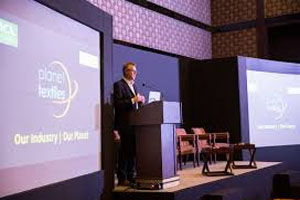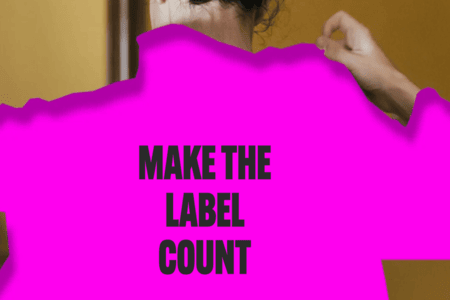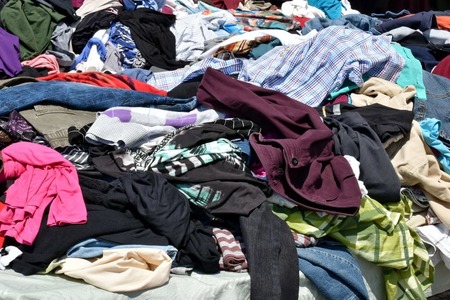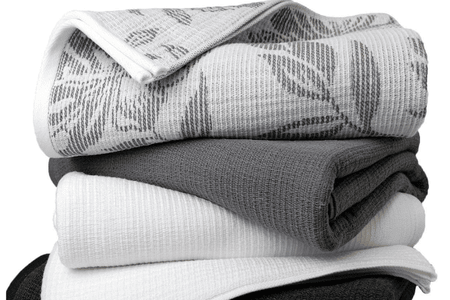
Planet Textiles attracted a wealth of local Indian delegates
YarnsandFibers News Bureau 2017-06-07 15:30:00 – BangalorePlanet Textiles 2017 sustainability summit held on 24 May in Bangalore was a big splash with more than 340 delegates from 25 countries gathered where in the searing heat of Bangalore, the issues of water availability, water use and wastewater pollution were just as topical inside the venue, as they were outside on the streets of one of India’s most rapidly expanding cities.
Every year since 2012, Bangalore has been hit by drought; last year Karnataka, of which the city is the capital, has received its lowest rainfall level in four decades. Once famous as a retirement home and for its hundreds of lakes, Bangalore now has only 81 left. The rest have been filled and paved over with more than half said to be contaminated with sewage.
Set against this background, the clear focus on water at Planet Textiles 2017 attracted a wealth of local Indian delegates to the event, who told they were eager to hear much more about how the textile sector could contribute to improved water conservation in the region – and in the country as a whole.
Manoj Gulati, Executive Director, India, from international NGO Water.org which works with the likes of IKEA, Gap and Inditex to equip people with the means to access water and sanitation in textile producing regions, noted that the value of the Indian textiles industry, currently at US$108 billion, is expected to reach US$223 billion by 2021.
Presently, the Indian textiles sector consumes around 830 million cubic litres of water per annum, he added. This pressure on water availability can only go one way unless they start to act now.
Water.org provides micro-loans so that individuals can improve access to water and sanitation through WaterCredit. So far it has helped to supply 5.2 million people and has a 99 per cent repayment on these loans. They address both the symptom and the cause: solve for the immediate need by creating access to safe water and sanitation now. Solve for the big picture by setting up a system that works at scale and lives long after they do.
Keynote speaker Tracy Nilsson, Senior Director of Social Environmental Affairs at Adidas emphasised to the Indian textile mills present at the event how its tier 1 and tier 2 suppliers are expected to reduce water use at a minimum of 20 percent by 2020.
Water is not only essentially for life, it is a key resource for our industry. Factors, such as the ever growing population and the impacts of climate change are tipping the scale to a point where water supply may no longer meet demand. With an increases and ever growing issue of water scarcity, we have developed an overall approach to address water efficiency, improve wastewater quality and provide better accessibility to water in communities,†she said.
One way the Indian textile sector has tackled wastewater problems is through the zero liquid discharge project in Tirupur. Sajid Hussain, Chief Operating Officer of the Tamilnadu Water Investment Company Limited noted the value of wastewater use through zero discharge when he noted that according to a UNESCO report, India is the number one country when it comes to annual groundwater extraction. They remove on average 251 cu/km (cubic kilometres per year) compared to the USA and China which come a distant second and both average water extraction rates of around 112 cu/km.
Historically, Hussain notes how there has been the indiscriminate withdrawal of ground water ‘free of cost’ in most parts of the country, but that costs are now being applied. Water has been priced low in many parts. However, the cost of fresh water for industry is now rising due to scarcity.
The ZLD project involves a range of advanced wastewater treatment technologies to recycle, recover and re-use ‘treated’ wastewater and thereby ensure there is no discharge of wastewater to the environment. Typically this comprises pre-treatment, reverse osmosis and an evaporator and crystallizer – so in short a lot of capital expenditure.
ZLD is a technological challenge, and the focus now must be on Zero Waste Disposal (ZWD). Brine concentration, evaporation, crystallization and disposal are problematic but the focus must be on the recovery and reuse of salts – which can be done in practice.
In the end, water scarcity, water economics and regulatory pressure will be the main drivers of ZLD and ultimately will determine the financial viability of this technology – which has worked well in Tirupur, he noted.
Breakout sessions sponsored by Archroma, Oeko-Tex and the ZDHC Group, focused on practical, sustainable, solutions for textile wet processing, chemical management and discharge, and pollution.
Discussing current issues surrounding textile wet processing, and where implementation in the textile value chain can be accelerated, Elaine Gardiner, sustainability manager, AFIRM Group and Pentland Brands said collaboration was the right way to go: They are all over-testing when they could be sharing information.
Agata Kostecka, Senior Manager, Sourcing Strategy, Gap, added that Transparency is still playing catch-up … everyone seems to be sharing their Tier 1 suppliers, but Tier 2 suppliers are not there yet. Gap works closely with PaCT, represented at Planet Textiles by Program Manager Mohan Seneviratne, in Bangladesh, which also has similar initiatives on best practises in textile processing in Vietnam.
As part of the discussion in the session, Tracy Nilsson, Adidas, added that as well as traceability, it is about scalability. For example, if Gap is already there with its own initiative, they can focus on other suppliers.
Looking to the future of sustainable wet processing, participants called for skill set increases – and the investments to do so, greater data transparency, improved KPIs and responsibilities taken for end-to-end solutions.
Concluding the Planet Textiles event, Rick Horwitch, Vice President of Global Retail Lead and Supply Chain Strategy at Bureau Veritas, said that the only thing that touches everyone is clothing and water: have a resource that we need for life, this is a problem we need to address. Planet Textiles has focused on practicalities and solutions.
The challenge is that they need to think and do things differently. Creating an impact, that is what they need to do.
The one-day Planet Textiles summit was part of a week-long series of events on environmental and social issues in the textile sector which included the two-day SAC annual members meeting and the SAC manufacturers’ forum.
Planet Textiles 2017 held 24 May at the JW Marriot in Bangalore, India was jointly organised by MCL News & Media, publisher of Ecotextile News, and the Sustainable Apparel Coalition (SAC).
Market Intelligence
Ask for free sample Report

experience
Customer Base
dedicated team
Countries Served Worldwide









